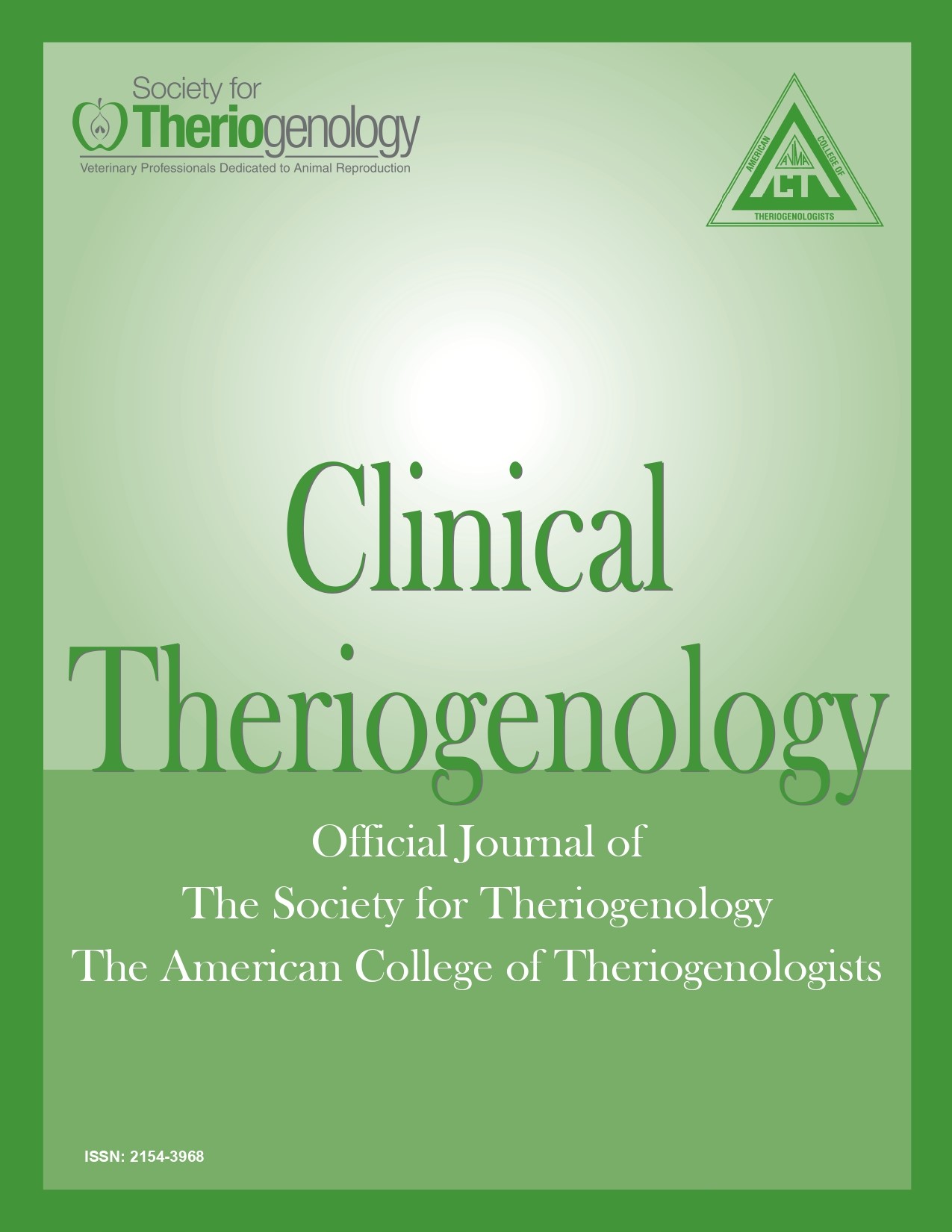The Effect Of Oxytocin Or Carbetocin Administration During Mid-Diestrus On The Interovulatory Interval And Estrous Behavior Of Mares
Abstract
Estrous behavior can negatively impact performance mares. Prolongation of the interestrus interval (IEI) or interovulatory interval (IOI) through oxytocin (OXY) injections represents a safe, reversible means of controlling estrous behavior. The purpose of this study was to determine whether an OXY analog, carbetocin (CARB), would increase the IOI and IEI similarly to OXY. We hypothesized that mares would have a longer IOI and IEI after treatment with OXY or CARB than they would during untreated cycles. Twelve cycling mares were randomly assigned to one of two groups (CARB and OXY). One normal cycle was documented in ten mares prior to the study and two mares after the study. During the treatment cycle, mares were administered either 1.19 mg of CARB or 60 IU of OXY once daily by intramuscular (IM) injection between day seven and 14 post-ovulation. Blood was drawn from all mares once weekly for progesterone assay. Mares were teased with a fertile stallion every other day to detect estrous behavior and subsequently examined by ultrasonography to detect ovulation between May and August. Administration of CARB decreased the IOI in all mares compared to the control cycle (18±1.1 vs. 20.8±1.8 days, respectively; P=0.00001). Administration of OXY increased the IOI in four of six mares (67%) compared to the control cycle (37.3±17 vs. 21.8±1.5 days, respectively; P=0.0025) and substantially delayed the return of estrous behavior in two of six mares (33%). Two mares failed to return to estrus before the end of the study; the diestral length at that time was used for calculations. Luteal regression and subsequent ovulation were confirmed with serum progesterone concentration after treatment in both groups. This work suggests that CARB, an analog of OXY, would not be useful for initiating long-term estrus suppression in the mare.
Downloads

This work is licensed under a Creative Commons Attribution-NonCommercial 4.0 International License.
Authors retain copyright of their work, with first publication rights granted to Clinical Theriogenology. Read more about copyright and licensing here.





